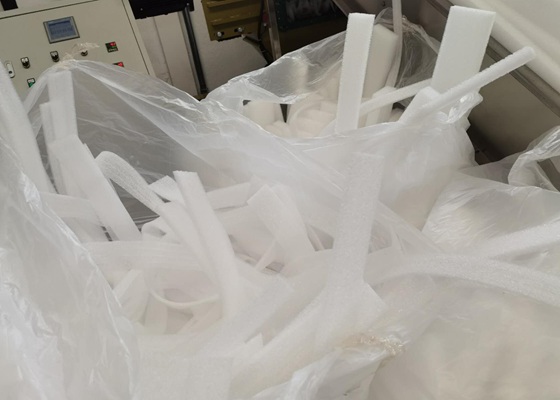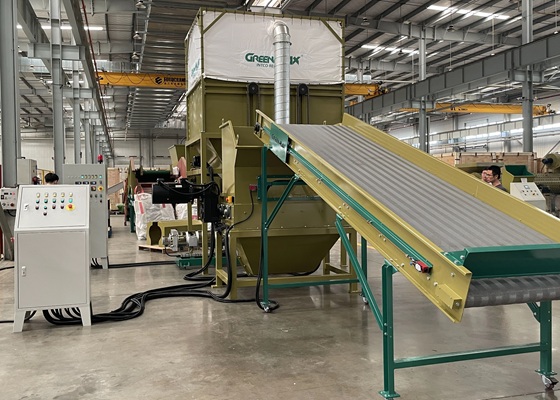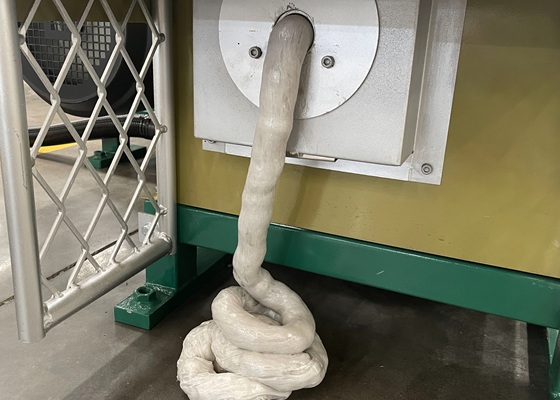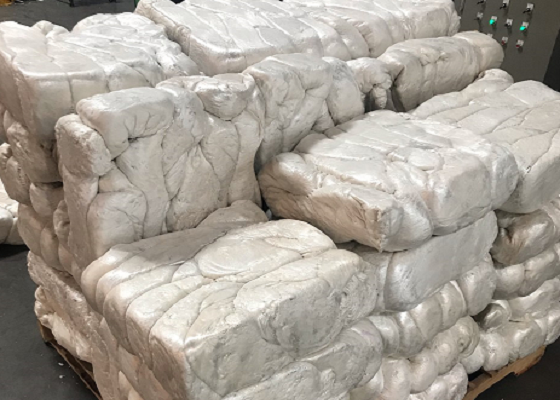Trouble with Transport and High Costs? GREENMAX Solves Your EPE Recycling Challenges
EPE packaging is soft and flexible, commonly used for electronic products and fragile items. It provides effective cushioning and shock absorption during transport, making it widely used for high-value products. However, after use, EPE is often treated as disposable waste, piling up in large quantities and becoming difficult to manage.
For example, in electronics companies, many components are wrapped in EPE foam during transportation. Once they arrive at the assembly center and are unpacked, the used EPE accumulates, taking up storage space and disrupting on-site operations.
With the growing focus on sustainability, direct landfill is clearly not a viable option. Some companies are struggling to find a suitable EPE recycling solution, while others are aware of the options but hesitate due to the challenges in handling the material.
Don’t worry—GREENMAX is here to help you address these common issues and make polyethylene recycling as hassle-free as possible.

1. Low transportation efficiency and limited storage space?
EPE foam is bulky and low in density, taking up significant warehouse space and even squeezing the storage area for products. Most companies wait until enough foam accumulates before handling it, which leads to long-term space occupation. Directly transporting loose foam is inefficient and costly, and even manual bagging and compression are often ineffective.
GREENMAX polyethylene densifier offers a solution. This foam reduction machine uses a high-temperature melting system to reduce foam volume by up to 90%. After compression, loose EPE becomes compact blocks that can be neatly stacked on pallets, saving storage space and improving the efficiency of EPE recycling transport.
Additionally, the GREENMAX foam crusher also provides a level of volume reduction. Since EPE packaging is often irregular in shape, basic shredding turns large foam pieces into uniform fragments, effectively improving storage and transport efficiency while reducing occupied space.

2. Is EPE recycling too costly?
A polyethylene densifier can reduce and compact foam, improving transportation efficiency and significantly lowering cost per unit of volume. In contrast, traditional landfill disposal may cost hundreds of dollars per month, becoming a long-term expense.
By investing in an EPE densifier, companies can generate continuous returns. Compressed EPE blocks can be sold to downstream pelletizing companies, turning waste into value. The equipment can also be rented out to nearby businesses with similar needs, jointly promoting polyethylene recycling.

If you find the investment in a polyethylene densifier too high, a foam crusher might be a better fit. This equipment provides basic shredding and volume reduction. While it doesn’t achieve the 90:1 compression ratio of polyethylene recycling, it is more affordable and easier to maintain.
Additionally, if your business expands and EPE recycling demand increases, the foam crusher can be seamlessly connected with the polyethylene densifier to carry out efficient recycling together.
If you’re interested in EPE recycling but don’t know where to start or have concerns, feel free to leave a message or contact me via WhatsApp. GREENMAX will provide you with a customized solution.

